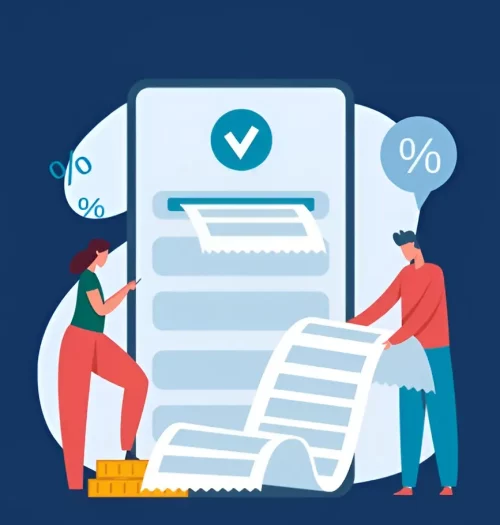Challenges and Opportunities for Digital Lenders in Covid 19 Recession



As the coronavirus, the antagonist of 2020, is continuing to capture lives across the globe, businesses are reacting to the recession in three different ways. Some businesses, mostly start-ups, have landed themselves with better product-market fit, some have pivoted towards satisfying new market demands and the rest are staying put, waiting for the tornado to pass.
Quick Fact: The Australian government will offer a guarantee of 50% to SME lenders to support short-term unsecured loans to SMEs. This can amount to over $40 billion in new lending.
While we take baby steps towards normalcy, we all know that the Covid crisis is here to stay for a while and the aftermath will linger upon us for the months (or may be for the years) to come. While it may be disheartening to see some businesses bury themselves during this difficult time, it is both relieving and interesting to observe how certain business models and industry sectors have the opportunity for innovation, learnings and behavioural shifts.
The Future of Fintech after the Covid-19 crisis
The fintech industry, like any another in the country, is feeling the pressure of the pandemic acutely. Some difficult decisions have been made by fintech players in the last months and lack of access to capital continues to haunt. Also, some players may be benefitted through the JobKeeper package while some may not be.
However, for an industry that is so digitally and financially literate, carving a part in the new economy, post the coronavirus pandemic will not be an unachievable thing. In fact, post the Covid crisis, the Australian government is looking to extend its international links through collaboration with countries such as the UK and Singapore. In fact, the government has hinted at looking at ways of boosting private sector investment in the fintech industry post the Coiv-19 crisis.
Digital lenders were like digital dynamos…
Just about three months ago, the digital lending landscape looked much different than what it does today. With the economy looking warm and conducive and fintech lenders offering record-low interest rates at an unimaginable pace, different categories of people were flocking to the cash-flushed digital lending space. The millennials loved the instant gratification and the frictionless experience and believed in these lenders than the traditional banks.
Challenges
Change is the only constant, they say! Covid-19 has brought some significant economical, behavioural and societal changes in the country. While grappling with these changes and trying to emerge a winner, digital lender must tackle some challenges.
A strong rise in the rate of impaired loans
With unemployment reaching a new high, impaired loans will be on the rise too. While the support from the Government can hold the impaired loan ratio for the first two quarters of 2020, the following months will exert some serious pressure on lenders. Experts predict that elevated levels of impaired loans may continue to persist even until 2025.
No sufficient appetite for credit
During this critical time, businesses and individuals are going to act more careful about their dollars (excluding the panic-buying of course!). The idea of buying a new car, home or exotic holidays has been suspended temporarily. Consequently, this will lead to poor loan growth throughout the year in the country. Businesses with little or no income will be hesitant to take on the burden on a loan, no matter how attractive it is.
Australian households in mortgage stress
The multi-billion dollar home loan industry in Australia was completely disrupted by fintech lenders a few year ago. With super-cool apps equipped with amazing algorithms, fancy in-built calculators and killer interest rates, the process of buying a new house was made much easier and quicker.
The outbreak of Covid-19 has pushed more than 1.4 million Australian households into mortgage stress and over 100,000 of them could soon default. For fintech lenders who are not lenient with their loan repayment terms, the defaults would be greater. Also, there is very little scope for growth in this line of lending as families are cash-starved and even viewing a house for potential buy with social distancing norms seems like an ordeal in itself.
The Australian government has, however, announced taxpayer funds of AUD $8 billion to buy AAA rated Mortgage Backed Securities from non-bank lenders. This step has been taken to maintain the competition in the home loan market.
Different approaches for different categories of customers
The coronavirus pandemic has affected businesses overall and yet at varying degrees. The time taken by a café to bounce back to business, may be lesser or more than a convenience store. (This also implies that the risk involving in funding businesses may vary significantly between different business sectors.) SMEs, in general, may have varying needs and digital lenders must be able to offer a difference in terms of credit type and repayment models based on the industry sectors they are catering to.
Increased competition
Covid-19 was a kind of “digital-check” for most financial institutions. Banks that had delayed their foray into the digital banking ecosystem will find extreme pressure from lenders offering highly targeted products at incredible interest rates. In response to this situation, traditional banks would consider this time as the most apt to move into the digital space. Consequently, fintech players will be facing fiercer competition from traditional banks that are going “digital” as well as from alternative sources of lending such as peer-to-peer lending. Considering the broader customer base, deeper understanding of financial operations and the ability to attract funding, if traditional banks execute their digital plans right, then they may turn into solid competition to digital lenders.
More pressure from regulatory bodies
Just as if the economic pressure was not sufficient, there will be added stress from the new regulatory changes in terms of capital management, liquidity standards, cyber security and risk management. Digital lenders must wait and watch how the situation will evolve and how lending standards will tighten.
Opportunities
Of all the long-term effects of Covid-19, the surge in digital services will be remarkably high (thanks to social distancing norms). This is especially true for financial services. The pandemic is about to throw some curveballs at the lending landscape and the possibility of the players to turn them into sixes is still open.
Meet the need for capital
When things fall back on track, digital lenders are going to be back in business. Businesses that have been will pick up where they left and continue to grow. Quite obviously, with unprecedented growth comes the need for capital. Businesses will be looking out for both traditional and digital lending sources to ensure the best access to capital. With lower transactions, this is the right time to think from the customer perspective and design products and services accordingly.
Quick Fact: Experts predict that there will be high demand for low-value loans as individuals and businesses may seek the capital required to return to their pre-Covid lifestyle if not for extravagant expenses and out-of-the-box investments.
A chance to connect with your customer
Building customer loyalty is not an easy task in today’s transitional business environment. Considering that digital lenders have very little direct connect with their customers, this is probably a good time to reconnect with them. This can be done by offering products that are highly specialised to meet specific demands of customers and by allowing some amount of leniency into the process. Armed with technology and lower operational costs, digital lenders are way ahead of the curve in meeting customer demands than traditional businesses.
Re-innovate and re-direct
Some market experts believe that not all digital lending companies are going to survive the crisis, while some don’t agree! However, with lowered business activity due to the crisis and a greater need for redirection, this may be the perfect time to reinvent the business. For instance, fintech lenders can look into ways of using analytics to build better customer relationships or catch up on all the technology-related security tools to appease more customers.
Technology for operational excellence and innovation
Lending, and in fact, most financial services will be turning to technology to smoothen out their operations. Digital lenders can focus on technologies such as loan management system(LMS) that will further make digital transactions easy and risk-free. Also, in a time when risk managers are battling with the assessment of technology risks, digital lenders must focus on analysing their data (data residing in silos), understanding the demands of new regulations and compliance risks and be prepared for integration challenges too. This helps digital lenders to adopt new and emerging technologies like machine learning, artificial intelligence and advanced analytics that can mitigate risk and enhance performance.
Greater opportunities for partnerships
The recession will make traditional banks more open to collaborating with fintech lending companies as digitization is the need of the hour. Such collaborations will be a win-win situation for both entities. For traditional banks, the collaboration awards lower investment (in technology and staff), reduced cost per loan, a fully-digitized customer experience and quicker gratification of customer needs. For the digital lender, the association means access to a broader customer base, increased support in terms of regulation and compliance and deeper financial services experience.
Aim for greater agility
Adoption of the right technologies can make digital lenders more agile that ever. By staying agile, companies help customers as well as themselves by building a sustainable platform for loan provisioning. Some ways to enhance agility is through the use of low-code applications (giving greater visibility into the process), intelligent automation and case management (quicker analysis and management of scattered data thus preventing data silos). While all three technologies are important, automation is considered a tad more significant to streamline the entire process.
Build a strong approach to fraud prevention
With more people opting for online financial services during the lockdown period, the landscape has turned into a fertile ground for fraudsters. Banks have thus far reported multiple cases of Covid-19 scams and most of these fraudulent actions have been targeted towards the vulnerable and elderly. Digital lenders who have already been handling such threats may see a rise in the volume and variety of frauds. Using Covid 19 as an excuse, it is time for fintech lending companies to seek technologies like behavioural biometrics, consortium intelligence and big data analytics to resolve the issue Companies must focus on creating a multi-layered approach to fraud prevention thus allowing themselves to gain optimal revenue and deliver laudable customer experience.
Social distancing and digital mortgage:
Australia has tightened the social distancing rules in order to combat the spread of Covid infection in the country. While the government has reported to end most restrictions by the end of July 2020, social distancing is expected to stay for quite some time. With more banks and financial institutions opting for closure of banks and the fear of the virus lingering upon the heads, more and more people are expected to go mobile while availing financial services. This may result in the development of new mobile-based technologies with prime focus on user convenience and safety.
Quick Fact: It is expected that regulatory mechanisms that focus on holding a certain level of regulatory capital and a proven ability to operate virtually will be established by the government across all industries.
Conclusion
There is a lot of uncertainty about what will happen after COVID-19 and this is not just from the economic perspective. The “new normal’ will push its demands on businesses and the digital lending sector will be no exception.
It is quite well-known that the low-income groups of the country have been the most affected by the pandemic. With an economic slowdown like never before, small and medium-sized businesses may find it more difficult to garner loans. Also, while more businesses may set out seeking loans, the amount needed may be lower (people will be less willing to take risks as there will be a certain amount of uncertainty continuing to exist). This may lead to the rise of digital lending platforms in the financial crisis. While there will be an initial struggle for digital platforms that are now handling the pressure of lowered capital access and forbearance of loans, there is certainly light at the end of the tunnel. With the right technology such as machine learning, data analytics and artificial intelligence, digital lenders will be able to handle creditworthiness efficiently and drive financial inclusion too.
In conclusion, digital lenders who already have the technological platform for accelerated loan disbursements, will now seek technology for innovation and risk mitigation. With a strong focus on innovation through technology and by partnering with a sound technological partner, challenges aggravated by Covid-19 can be turned into lucrative opportunities for the business.
Related Post

What Do Prominent P2P Players Think Of The RBI Regulations?
Following the US and UK models, RBI is all set

How the Pandemic changed the Banking Industry
At the start of 2020, the world was operating normally

Unleashing the Future: CloudBankin’s Thrilling Funding Breakthrough
Hey there, everyone! I hope you're ready for some amazing
- Email: salesteam@cloudbankin.com
- Sales Enquiries: +91 9080996606
- HR Enquiries: +91 9080996576